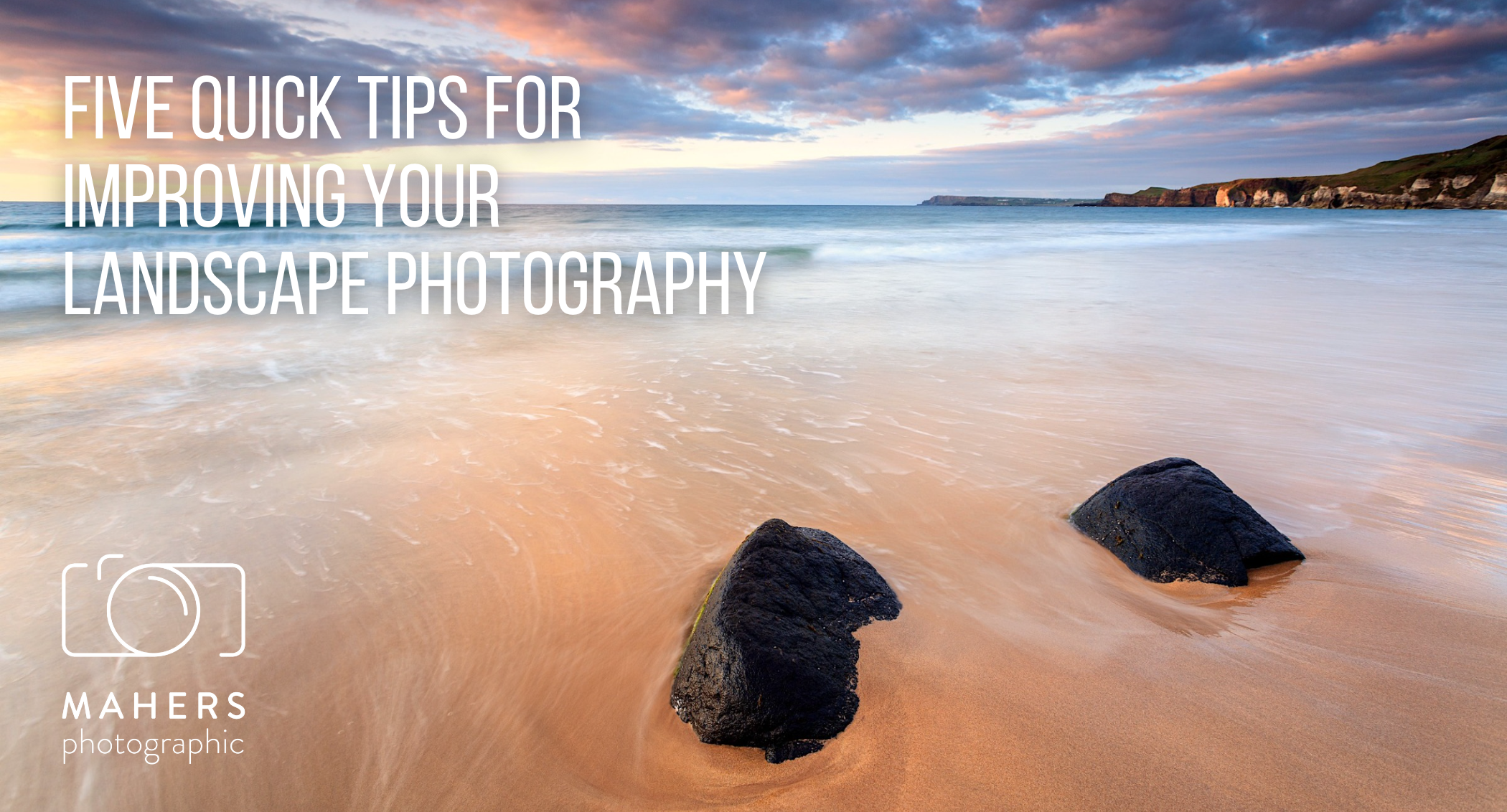Continuing our quick tips series here are 5 tips for improving your landscape photos. Landscape photography in the right light can be mesmerising but even flat light has its qualities. We are gifted in Ireland with VERY varied light conditions so get out there and into position and get shooting....! Here are a few pointers to get you going....
1. Consider the light: The quality of light can make or break a landscape photo. Soft, warm light during sunrise or sunset is ideal for landscape photography, as it creates a warm, golden glow that brings out the rich colors of the landscape. However, you can also create stunning images in other lighting conditions. For example, overcast days can produce soft, even light that flatters landscapes and eliminates harsh shadows. Experiment with shooting during different times of day and under different weather conditions to see what works best for your scene.

2. Find a strong focal point: A strong focal point is essential in landscape photography, as it gives your images a clear center of interest and helps to lead the viewer's eye through the scene. This could be anything from a mountain peak, to a tree, to a waterfall. When choosing a focal point, consider how it relates to the rest of the scene and how it can help to create a sense of depth and scale. Also remember it's not all about wide angle. Compress a scene with a longer focal length to make items appear closer together.

3. Use a tripod: A stable base is essential for sharp images, especially when shooting in low light or with a long shutter speed to capture movement in the scene. A tripod also allows you to fine-tune your composition and make adjustments to your camera settings without worrying about camera shake. If on sand 'bed' your tripod in by pushing it into the sand to stabilise it even more.
 4. Pay attention to the foreground: The foreground is often overlooked in landscape photography, but it can help to create depth in your images and draw the viewer into the scene. Try to find elements that complement the background, such as rocks, flowers, or reflections in water. Consider how you can use the foreground to lead the viewer's eye into the scene and create a sense of depth.
4. Pay attention to the foreground: The foreground is often overlooked in landscape photography, but it can help to create depth in your images and draw the viewer into the scene. Try to find elements that complement the background, such as rocks, flowers, or reflections in water. Consider how you can use the foreground to lead the viewer's eye into the scene and create a sense of depth.
 5. Experiment with composition: Composition is key in landscape photography, as it can make or break an image. The rule of thirds is a useful starting point, but don't be afraid to break the rules and try something different. Move around your subject, get low to the ground, or try a bird's eye view to find a new perspective. Consider how you can use lines, curves, and shapes to lead the viewer's eye through the scene and create a sense of balance. Experiment with different compositions and see what works best for your scene. Maybe see how it would look in black and white.
5. Experiment with composition: Composition is key in landscape photography, as it can make or break an image. The rule of thirds is a useful starting point, but don't be afraid to break the rules and try something different. Move around your subject, get low to the ground, or try a bird's eye view to find a new perspective. Consider how you can use lines, curves, and shapes to lead the viewer's eye through the scene and create a sense of balance. Experiment with different compositions and see what works best for your scene. Maybe see how it would look in black and white.

There you go. I hoped them points helped you somewhat. If you ever want further help please never hesitate to call us or pop into the shop for a chat and further advice. Just bring me a coffee!

